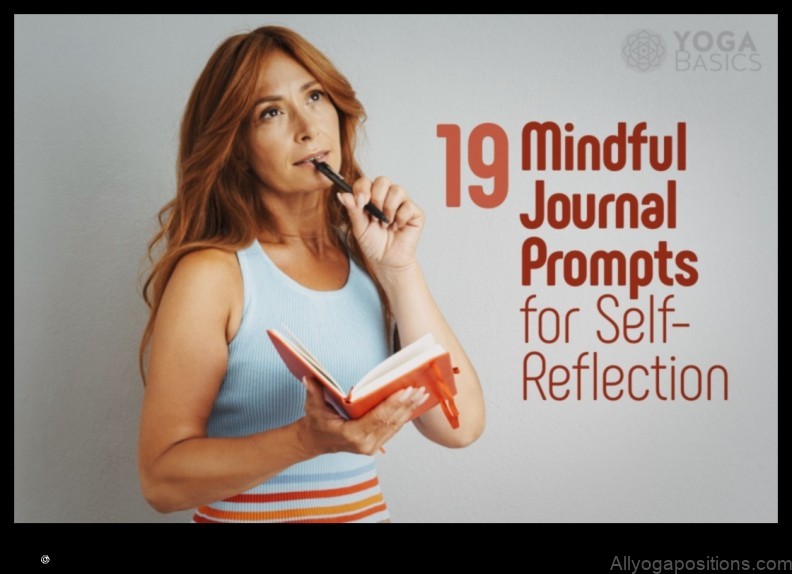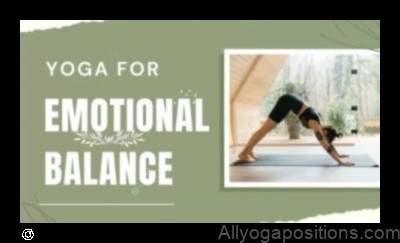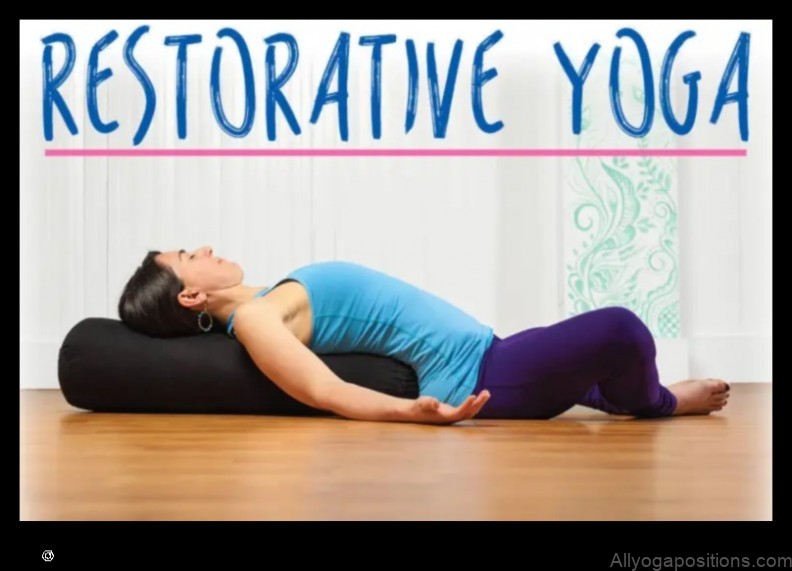
Yoga for Emotional Release: Journaling and Reflection
Yoga, journaling, and reflection are all powerful tools for emotional release. They can help you to relax, focus on your breath, and process your thoughts and feelings. Additionally, yoga and journaling can help you to connect with your body and mind, which can lead to a greater sense of well-being.
This article will discuss the benefits of yoga, journaling, and reflection for emotional release. It will also provide tips on how to use these tools to improve your mental health.

Benefits of Yoga for Emotional Release
Yoga can help to improve your emotional health in a number of ways. For example, yoga can:
- Reduce stress
- Improve mood
- Increase relaxation
- Boost self-esteem
- Reduce anxiety
- Improve sleep
Yoga can also help you to connect with your body and mind, which can lead to a greater sense of well-being. When you practice yoga, you are paying attention to your breath, your body, and your thoughts. This can help you to become more aware of your emotions and to learn how to manage them in a healthy way.
Benefits of Journaling for Emotional Release
Journaling is another powerful tool for emotional release. Journaling can help you to:
- Process your thoughts and feelings
- Identify your triggers
- Develop coping mechanisms
- Increase self-awareness
- Improve your mental health
When you journal, you are giving yourself a safe space to express your thoughts and feelings. This can help you to process them in a healthy way and to identify the root of your problems. Journaling can also help you to develop coping mechanisms for dealing with difficult emotions.

Benefits of Reflection for Emotional Release
Reflection is the process of thinking about your thoughts and feelings. Reflection can help you to:
- Gain a deeper understanding of yourself
- Identify your values
- Make better decisions
- Improve your relationships
- Increase your happiness
When you reflect, you are taking the time to understand yourself and your life. This can help you to make better decisions and to live a more fulfilling life.
How to Use Yoga for Emotional Release
There are many different ways to use yoga for emotional release. Here are a few tips:
- Choose a yoga style that is right for you. There are many different types of yoga, so it is important to find one that you enjoy and that fits your needs.
- Focus on your breath. When you practice yoga, pay attention to your breath. This can help you to relax and focus on the present moment.
- Listen to your body. Yoga is a practice of listening to your body. Pay attention to how you feel during your practice and adjust accordingly.
- Be patient. It takes time to learn how to use yoga for emotional release. Be patient with yourself and don’t expect to see results overnight.
How to Use Journaling for Emotional Release
There are many different ways to use journaling for emotional release. Here are a few tips:
- Find a time and place where you can journal without interruptions.
- Write whatever comes to mind, without censoring yourself.
- Don’t worry about grammar or spelling.
- Journal regularly, even if it is just for a few minutes each day.
How to Use Reflection for Emotional Release
There are many different ways to use reflection for emotional release. Here are a few tips:
- Take some time each day to reflect on your thoughts and feelings.
- Write in a journal about your thoughts and feelings.
-
Topic Answer Yoga for Emotional Release Yoga can help to release emotions by providing a physical outlet for stress and anxiety. It can also help to improve mood and reduce stress levels. Journaling for Emotional Release Journaling can help to process emotions by providing a safe space to express thoughts and feelings. It can also help to identify patterns of thought and behavior that contribute to negative emotions. Reflection for Emotional Release Reflection can help to gain insight into emotions by taking the time to think about them in a structured way. It can also help to develop strategies for coping with difficult emotions. Benefits of Yoga for Emotional Release Yoga can help to release emotions, improve mood, reduce stress levels, and increase mindfulness. Benefits of Journaling for Emotional Release Journaling can help to process emotions, identify patterns of thought and behavior, and develop strategies for coping with difficult emotions. Benefits of Reflection for Emotional Release Reflection can help to gain insight into emotions, develop strategies for coping with difficult emotions, and increase mindfulness. II. Yoga for Emotional Release
Yoga is a mind-body practice that can help to improve physical, mental, and emotional health. Yoga can help to relieve stress, anxiety, and depression, and it can also help to promote relaxation and mindfulness. There are many different types of yoga, and some types are more specifically designed for emotional release than others. Some of the most common types of yoga for emotional release include:
* Hatha yoga: This type of yoga focuses on slow, gentle movements and breathing exercises. It is a good choice for beginners or for those who are looking for a gentle way to relieve stress.
* Vinyasa yoga: This type of yoga is more dynamic than Hatha yoga, and it involves flowing from one pose to the next. Vinyasa yoga can be a good choice for those who are looking for a more challenging way to work out and relieve stress.
* Bikram yoga: This type of yoga is practiced in a heated room, and it is designed to help to detoxify the body and mind. Bikram yoga can be a good choice for those who are looking for a challenging workout that can also help to improve their overall health.No matter what type of yoga you choose, it is important to find a class that is right for you and that you enjoy. Yoga can be a great way to relieve stress, improve your mood, and connect with your body and mind.
III. Journaling for Emotional Release
Journaling is a powerful tool for emotional release. It can help you to process your thoughts and feelings, identify patterns in your behavior, and develop healthier coping mechanisms. When you journal, you are creating a safe space to explore your inner world without judgment. This can be incredibly therapeutic, and it can help you to feel more connected to yourself and your emotions.
There are many different ways to journal, and there is no right or wrong way to do it. Some people prefer to write long, detailed entries, while others prefer to keep their journaling more brief. You may want to experiment with different styles of journaling until you find one that feels right for you.
Here are some tips for journaling for emotional release:
* Find a quiet, private place where you won’t be interrupted.
* Set aside a specific time each day for journaling.
* Write whatever comes to mind, without censoring yourself.
* Be honest with yourself about your thoughts and feelings.
* Don’t worry about grammar or spelling.
* Let your emotions flow freely.
* Don’t be afraid to cry or express anger.
* Journaling is a process, and it takes time to see results. Be patient with yourself and keep at it.IV. Reflection for Emotional Release
Reflection is a powerful tool for emotional release. It can help you to identify the root of your emotions, process them in a healthy way, and find ways to move forward. When you reflect on your emotions, you are taking the time to understand them and to learn from them. This can help you to let go of negative emotions and to move towards a more positive and healthy state of mind.
There are many different ways to reflect on your emotions. You can journal, talk to a therapist, or simply spend some time alone, quietly reflecting on your thoughts and feelings. When you reflect, it is important to be open and honest with yourself. Allow yourself to feel your emotions, without judgment. The more you can understand your emotions, the better equipped you will be to deal with them in a healthy way.
Reflection can be a difficult process, but it is also a very rewarding one. When you take the time to reflect on your emotions, you are taking steps towards healing and growth. You are learning to understand yourself better, and you are finding ways to live a more fulfilling and meaningful life.
V. Benefits of Yoga for Emotional Release
Yoga can be a helpful tool for emotional release, as it can help people to relax, focus on their breath, and process their thoughts and feelings. Some of the specific benefits of yoga for emotional release include:
Reduced stress and anxiety. Yoga can help to reduce stress and anxiety by helping people to relax and focus on their breath. When people are stressed or anxious, their bodies go into “fight or flight” mode, which can lead to a number of physical and emotional symptoms. Yoga can help to counteract this by calming the nervous system and promoting relaxation.
Improved mood. Yoga can improve mood by helping people to connect with their bodies and minds. When people practice yoga, they are able to focus on their breath and their movements, which can help to bring them into the present moment and improve their mood.
Increased self-awareness. Yoga can help people to increase their self-awareness by helping them to identify and process their emotions. When people practice yoga, they are able to pay attention to their bodies and minds, which can help them to become more aware of their thoughts and feelings.
Enhanced mindfulness. Yoga can help people to develop mindfulness, which is the ability to pay attention to the present moment without judgment. Mindfulness can help people to manage their emotions more effectively and live more peacefully.
Improved sleep. Yoga can help people to improve their sleep by helping them to relax and de-stress. When people are stressed or anxious, they may have trouble falling asleep or staying asleep. Yoga can help to counteract this by helping people to relax and calm their minds.VI. Benefits of Reflection for Emotional Release
Reflection can be a powerful tool for emotional release. When we take the time to reflect on our thoughts and feelings, we can gain a deeper understanding of ourselves and our experiences. This can help us to process our emotions in a healthy way and to let go of negative feelings.
Reflection can also help us to identify patterns in our thoughts and behaviors that may be contributing to our emotional distress. Once we are aware of these patterns, we can start to make changes that will help us to feel better.
Reflection can be done in a variety of ways, such as journaling, writing in a diary, talking to a therapist, or simply taking some time each day to sit quietly and think about your thoughts and feelings.
If you are struggling with emotional distress, reflection can be a helpful tool for finding relief. By taking the time to reflect on your thoughts and feelings, you can gain a deeper understanding of yourself and your experiences, and you can start to make changes that will help you to feel better.
VII. Benefits of Reflection for Emotional Release
Reflection is a powerful tool for emotional release. It can help you to identify the root causes of your emotions, process them in a healthy way, and find ways to move forward. When you reflect on your emotions, you are taking the time to understand them on a deeper level. This can help you to see them from a different perspective and to find ways to cope with them in a more constructive way.
Reflection can also help you to identify the triggers that cause you to feel certain emotions. Once you know what triggers your emotions, you can start to avoid them or learn how to cope with them in a healthy way.
Finally, reflection can help you to find ways to move forward from difficult emotions. When you understand your emotions and the triggers that cause them, you can start to make changes in your life that will help you to feel better.
Reflection is a powerful tool for emotional release. It can help you to identify the root causes of your emotions, process them in a healthy way, and find ways to move forward. If you are struggling with emotional issues, I encourage you to try reflecting on your emotions. It may be just what you need to find relief.
How to Use Yoga for Emotional Release
Yoga can be a helpful tool for emotional release, as it can help people to relax, focus on their breath, and process their thoughts and feelings. Here are some tips for using yoga for emotional release:
- Choose a yoga practice that is appropriate for your needs and experience level.
- Focus on your breath and body sensations as you practice.
- Listen to your body and mind, and allow yourself to feel your emotions without judgment.
- Be gentle with yourself and don’t push yourself too hard.
- After your practice, take some time to journal or reflect on your experience.
Yoga can be a powerful tool for emotional release, but it is important to remember that it is not a substitute for professional mental health care. If you are struggling with emotional issues, it is important to seek professional help.
How to Use Journaling for Emotional Release Journaling is a powerful tool for emotional release. It can help you to process your thoughts and feelings, identify patterns in your behavior, and develop healthier coping mechanisms. When you journal, you are creating a safe space to explore your inner world and to connect with your true self.
Journaling can be especially helpful for people who are struggling with emotional challenges, such as stress, anxiety, or depression. It can provide a way to express your emotions in a safe and non-judgmental way, and it can help you to develop a greater understanding of yourself and your needs.
If you are new to journaling, or if you are looking for ways to improve your journaling practice, here are a few tips:
- Find a time and place where you will be free from distractions.
- Start by writing down your thoughts and feelings without censoring yourself.
- Don’t worry about grammar or spelling. The goal is to express yourself, not to produce a perfect piece of writing.
- If you get stuck, try writing about a specific memory, event, or feeling.
- You can also use journaling to set goals, plan your day, or simply record your thoughts and experiences.
Journaling is a personal journey, and there is no right or wrong way to do it. The most important thing is to find a way that works for you and to stick with it. With time and practice, journaling can be a powerful tool for emotional release and healing.
FAQ
Q: What are the benefits of yoga for emotional release?
A: Yoga can help to release emotions by providing a safe and supportive space to practice mindfulness, relaxation, and breathwork. Yoga can also help to improve physical and mental health, which can lead to a greater sense of well-being and emotional resilience.
Q: What are the benefits of journaling for emotional release?
A: Journaling can help to release emotions by providing a safe and private space to process thoughts and feelings. Journaling can also help to identify patterns of thought and behavior that contribute to emotional distress, and it can provide a sense of catharsis and relief.
Q: What are the benefits of reflection for emotional release?
A: Reflection can help to release emotions by providing a space to step back from the situation and gain perspective. Reflection can also help to identify the underlying causes of emotional distress, and it can help to develop coping mechanisms for dealing with difficult emotions.
Table of Contents
Maybe You Like Them Too
- Ganesha Mudra A Yoga Pose to Promote Good Luck and Prosperity
- Lord of the Dance Pose A Dynamic Yoga Pose for a Strong Core
- Utthita Parsvakonasana The Side Angle Pose That Stretches and Strengthens
- Meditation and Mindful Living A Holistic Approach to Well-Being
- Peaceful Presence Yoga for TranquilityA Guide to Finding Stillness and Balance in a Chaotic World
